Half Day Tour: In Pangani, town elders, serve as knowledgeable guides who can impart their vast understanding of Pangani history and culture as they lead you through Pangani town. In 1810, the Arabs constructed the Central Boma building and buried live humans at each pillar in belief that a strong foundation would be formed. Later, German administration used the establishment as a Colonial District office and added a European style roof giving the building a unique appearance. The intricate carved doors and foundation still remain strong and is now used as the District Commissioner’s Office.
British Overseas Management Administration (BOMA), guided walks will lead the visitors to numerous historical monuments which Pangani is endowed with. Tours here include visit to the original slave depots and slave market where Arabs traded slaves to India and Arabia, the freedom grounds, Islamic and German graves, ancient mosques and traditional houses which will give Tourists a good insight into the 15th & 16th Century history and culture of Pangani town. Meanwhile artisans proudly display the rich culture and tradition as visits to woodcarvers, basket weavers, carpet makers, and painters will attest.
Download PDF Read MoreThis tour begins with a 70 km bus ride from Babati to Katesh. You will have your lunch in a local hotel. From here you will start a 16 km bush walk towards the Mangati plains. In Dirma, a Barbaig nomad village, you will be warmly welcomed at Mzee Gavachu’s boma. Within no time you will see Barbaig women and men coming to meet their new guests. Our Barbaig guide will help you in translating in a place where only the Barbaig language is spoken. You would be given to sit on three legged stools and you will have dinner prepared by the women. In the huts a bed with a skin only will be waiting for you to rest.
A relaxed day where the visitors can mix freely with the local people and gain the cultural insights from local men and women while taking pictures together and knowing more about procedures of marriage, burial of elderly men, religious rituals, local taboos etc. Have a look at how they make the goatskin gowns and the ornaments, how they prepare the famous honey brew called Gisuda. One can try to herd cattle or fetch water in the Barbaig way. The only school and dispensary can be visited where you can talk with teachers and nurses.
Walk back to Katesh, where you will have the lunch and take the further bus trip to Babati or Arusha. Mount Hanang (3 418m): the fourth highest mountain of Tanzania, can be climbed in one day. An early start is necessary with guides and porters through farmland, forest, scrub and grasslands. Finally, after 5 – 6 hours walking, you will reach the summit. Another 3 – 4 hours is needed for the descent. But it is advisable to climb from Gendabi at the foot of the mountain, a 3 hours walk from Katesh. Teachers from the Secondary school will provide accommodation and food. After spending the night in the village you climb and have more time to enjoy the scenery. Summiteers will receive a certificate. God’s Bridge Walk: Drive from Babati to Bacho village at the foot of the Rift Wall where you visit local fish ponds. Along local paths climb the escarpment and visit God’s Bridge with a fantastic view. Descend and walk to the main road where you drive back to Babati Combined tours.
All tours can be combined. A cycling expedition can be organized on request. For birdwatchers exclusive safaris are designed. A combination of a visit to the National Parks with our Cultural tour is possible. The five hour’s drive from Karatu, Mbulu and Dareda to Katesh is an extreme beauty. From Katesh to the Tarangire gate can be reached within three hours.
FACILITIES: Full board accommodation in selected local hotels and guesthouses in Babati and Katesh. Selected family homes / huts in the villages with basic standards and without running water. Temporary self catering campsites can be organized. In the villages women provide food. Lunch boxes can be ordered from Joas Kahembe. Recommended equipment: Good walking shoes, sleeping bag (mattress), water bottle, filter or micro-pure tablets, anti-malaria pills and torch.
DEVELOPMENT PROJECT: In Managhat the villagers decided to invest the Village Development Fee in the rehabilitation of the primary school.
GUIDES: English speaking guides who know the area will help you around. A Barbaig born guide will tell you about Barbaig culture.
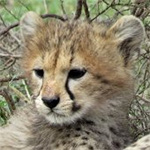
Tanzania is great to visit any time of year. Most people avoid the rainy months of April, May, and November. Some travelers like to go during the peak migration season of wildebeest, zebras and number of antelopes in Serengeti National Park, Ngorongoro Highlands and Masai Mara in Kenya. Not only that most people also like to lay on the sunshine of the Zanzibar beach lure water and white sand beaches as well as diving to the coral reefs.
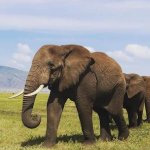
We use 5 or 7 passenger 4-wheel-drive Land Cruisers, Toyota Hiace as well as Land Rovers all with viewing roofs for the safaris. Take a note that a normal minibus or saloon can be used for transfer to and from the airport depending on the size of the group which is visit the country.
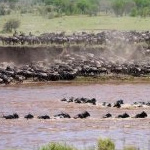
They are licensed, trained, friendly, and have years of experience in Tanzania safari! All of them speaks fluent English and others have additional languages of your mother tongue to meet your comfort and informative safari in Tanzania.
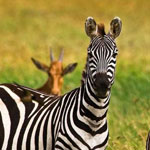
You can buy any drinks along your way to the Tanzania safari. There will be mini-markets in town and also you can have some at your hotel or lodge that you will spend an overnight there.
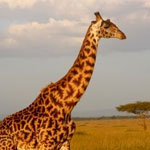
With modernized World most of the lodges and tented camps serve breakfast and dinner, typically buffet-style. European, Asian and African cuisines are served in a high standard. Due to the fact that you will be spending your afternoon doing game drive often you will have to take your lunch box with you.
If by chance the itinerary shows that you will take your hot lunch at the hotel then there is no need of packed lunch. Basically lunch at the lodge follows with a rest before proceeding with late afternoon game drive.
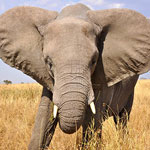
The great extraordinary animal kingdom migration is an annual migration of about 1 million wildebeest, 300000 zebras and 200000 gazelles migrating from Serengeti National Park to Ngorongoro crater and contiguous Masai Mara National Reserve searching for fresh grasses as well as water. This is a honeymoon (easy to hunt) period for the crocodile in Grumeti River and other carnivores such as lion and leopard while the migration is taking place. For more information on how the migration takes place please click here.
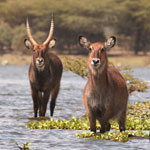
The best time to see the migration in Tanzania is January-March and June-August and in Masai Mara National Reserve in Kenya it is often best September-October. These are also the most popular times to go, so you will need to book well in advance.
You will see abundance of wildlife all year round. However it should be clear that changing of weather can affect this migration circular and a need for some two to three days in Serengeti National Park give you a wide chance of view migration properly.
Whether you are looking to explore the wildlife of the Serengeti, or begin your expedition up Mount Kilimanjaro, we have something suitable for all of you. Get in touch with us today and our team of specialists will help build your experience of a lifetime to Tanzania
Read More